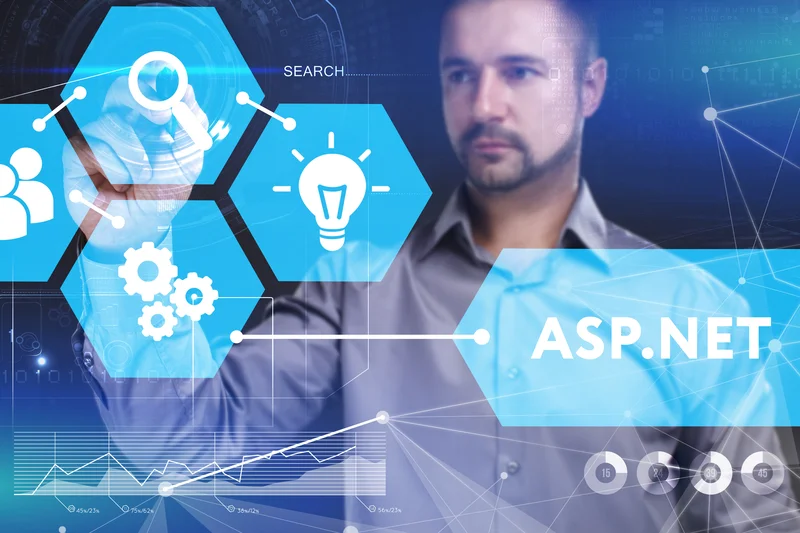Call For A Personalized Case Evaluation
Call For A Personalized Case Evaluation
A shorter lead time means faster delivery of new options, bug fixes, and updates. Reaching higher levels of DevOps maturity naturally leads to higher software high quality and a extra seamless person experience. After all, you’ll combine extra code high quality checks and automatic safety scans into your pipeline. That means, you probably can catch points early and ensure your product meets high-quality standards each time. Streamlined workflows and decreased prices are direct advantages Digital Trust of reaching higher maturity levels in DevOps.

Let’s look at the position of this mannequin in bringing a couple of change, be it gaining the proper perspective on DevOps practices or utilizing them optimally. DevOps-like practices are entirely missing or so disjointed that stakeholders do not know about their use. Overall, the DevOps model is functioning properly, and metrics are all enhancing. DevOps maturity, identical to DevOps itself, does not have a singular definition. It’s extra of a journey than an end aim, and it appears completely different from one group to the following. Bigger adjustments are managed successfully ci cd maturity model to vastly scale back danger and minimize disruption.
Explore the dynamic spectrum of the DevOps maturity matrix, from the foundational base to the top of expertise. Join us on a journey via the stages of teamwork and collaboration to data, metrics, and insights. With automated testing, the primary focus strikes to the left, and coverage grows with time. It is crucial for teams to have a typical language in order to speed up the supply of value.

Regardless of how you refer to it, this KPI measures how rapidly your team can recuperate from a failure. A lower recovery time signifies that your group can quickly diagnose and resolve points, leading to larger buyer satisfaction and fewer disruption. Sharing information and insights is essential because it helps teams keep aligned and work toward a typical goal. This collaboration improves team morale and the overall performance of your DevOps setting. Automating repetitive duties is a core part of achieving DevOps maturity as a outcome of it improves operational effectivity and reduces human error.
These metrics assist you to understand where your group stands and establish areas for enchancment. Let’s study a number of the most necessary metrics for assessing DevOps maturity. A mature DevOps strategy ensures clean and environment friendly utility and infrastructure scaling. Automating handbook processes and enhancing configuration administration help you deal with increasing calls for with out compromising performance, guaranteeing your systems are prepared for progress. DevOps Maturity Model is linked to safety because safety is a critical facet of DevOps practices. The DevOps Maturity Model emphasizes the significance of integrating security into the software growth lifecycle to make certain that security is taken into account at each stage of the development course of.
Organizations are geared up with well-defined frameworks, extensive teamwork, and a sensible procedure for efficient sharing. The talent coaching can be conducted whereas driving other tasks as a spin-off. Excluding end-users From the Improvement ProjectIgnoring end-user feedback can end result in solutions that don’t meet their needs or expectations. Including user input helps ensure that the merchandise developed are helpful and practical. Assessment Criteria Standards are used to judge the effectiveness and maturity of DevOps practices within a corporation. The DevOps Maturity Model permits you to view DevOps practices in a new light.
With its sooner time to market, fewer bugs in production, and improved buyer satisfaction, DevOps is leaving all other methodologies within the mud. Evaluating metrics corresponding to deployment frequency, lead time for adjustments, change failure price, and buyer satisfaction enhancements. Poor Communication between Dev and Ops teamsMisunderstandings and delays occur when improvement and operations groups don’t talk effectively. This lack of coordination can result in mismatched priorities and inefficient workflows, making reaching clean, steady delivery harder. In Phase 4, organizations build on their automation investments by implementing a continuous integration pipeline, resulting in more tangible business advantages from their DevOps practices.
The primary downside of this model is that, because of its broad coverage, it might not provide a precise evaluation of DevOps maturity. To measure DevOps maturity by knowledge you must keep in mind the ability of DataOps to take motion for automating information modifications and automatically verify functionality. Spacelift is an infrastructure orchestration platform that increases your infrastructure deployment pace without sacrificing control. With Spacelift, you can provision, configure, and govern with a number of automated workflows that orchestrate Terraform, OpenTofu, Terragrunt, Pulumi, CloudFormation, Ansible, and Kubernetes. Score each category (such as automation, security, or collaboration) on a scale of 1–5.
Using the DevOps maturity model, you presumably can determine your organization’s strengths and weaknesses and focus your training on key areas that need improvement, permitting you to more simply advance to the subsequent stage. Before diving into the levels of the DevOps maturity mannequin, let’s look at the key tenets of DevOps that every one mature organizations have in widespread, so you presumably can better gauge where you stand. DevOps has turn out to be a popular buzzword in the world of software program development and operations and for good reason. It is a strategy that emphasizes collaboration, communication and automation to streamline the software program improvement, CI/CD setup and delivery process. As organizations progress through their DevOps maturity journey, security practices turn into deeply built-in into the software improvement course of, leading to the emergence of DevSecOps.
Having stated this, it is necessary to spotlight the truth that AI/ML capabilities in instruments like GitHub are set to redefine the landscape and we’d see complete augmentation of DevOps maturity mannequin trends. It is essential to acknowledge that DevOps is a culture-based program that encourages the participation of various groups as they work in the course of a common goal. A report claims that three-fourths of DevOps initiatives are predicted to fall short of their aims as a end result of organizational failure to create a tradition that is open to this shift. Organizations still witness siloed operations even after a yr of DevOps journey with some automation however acknowledge the worth of the model new ability.
Collaboration is not an exception but the norm, and your DevOps technique is clearly outlined. By embracing a data-driven method to DevOps, organizations can make informed selections, proactively identify points, and optimize their software supply pipeline. Data-driven DevOps maturity permits organizations to realize faster feedback loops, enhance collaboration, and deliver high-quality software that aligns with enterprise aims and buyer needs. By reaching larger ranges of DevOps maturity for an software, organizations can reap the advantages of faster time-to-market, improved software quality, elevated agility, and enhanced customer satisfaction. DevOps Maturity Model is a framework used to measure a corporation’s maturity in implementing DevOps practices. It consists of a set of phases that an organization can progress via to improve its DevOps capabilities.
Dev and Ops ought to strive to work as a single organism with a maximized effort and all processes geared toward a standard goal – constantly delivering worth. As the lifecycle of DevOps works repeatedly, it is important that it’s given the chance to mature via ongoing training in all elements of the group, with a give consideration to growth and operations. Training helps improve skill sets and establish areas for development and, in sort, will allow for teams to sort out more complex challenges with larger scopes.
There is often no standardization of processes, and groups might operate in silos. There may be some use of automation instruments, but it’s typically sporadic and there is no clear governance structure in place. The team’s focus is on achieving fast feedback loops and delivering features rapidly, but there could be often little emphasis on quality or collaboration. We will focus on the completely different stages of maturity and the traits of each stage. We may also focus on the benefits of using the DevOps Maturity Model and the way it might help organizations improve their software development and delivery processes.
This can even lengthen to different stakeholders, such as product design, InfoSec, and customer success. Software builders and the operational groups that support them are beneath extra pressure than ever to ship higher quality quicker. In an increasingly competitive SaaS world, information safety issues and downtime present extra enterprise risks than ever. Culture is the foundation on which each and every successful group is built and is a core ingredient of a DevOps implementation.
A DevOps maturity model is a framework that helps organizations assess their present stage of DevOps adoption and maturity. It allows them to discover out how far along they are in their DevOps implementations and benchmark themselves in opposition to one of the best. Organizations at this stage suffer from a spread of software growth issues (limited inter-team collaboration, too many guide tasks, buggy releases, lengthy approval processes, etc.). If you are struggling with adopting or making probably the most out of DevOps, your first step should be to evaluate present software program supply processes against a DevOps maturity mannequin. This stage is also called “Pipeline” or “Continuous Delivery.” At this stage, growth and operations teams are creating a more shared set of objectives and metrics. DevOps isn’t a destination, it is a journey in direction of a frequent and more dependable launch pipeline, automation and stronger collaboration between improvement, IT and enterprise groups.
Transform Your Business With AI Software Development Solutions https://www.globalcloudteam.com/ — be successful, be the first!

Attorney Bartis was born and raised in Hollis, New Hampshire.
He attended Plymouth State College where he earned a Bachelor’s
Degree in History with a minor in Psychology. Read More
Copyright©2025, Bartis Law Office, PLLC. All Rights Reserved.